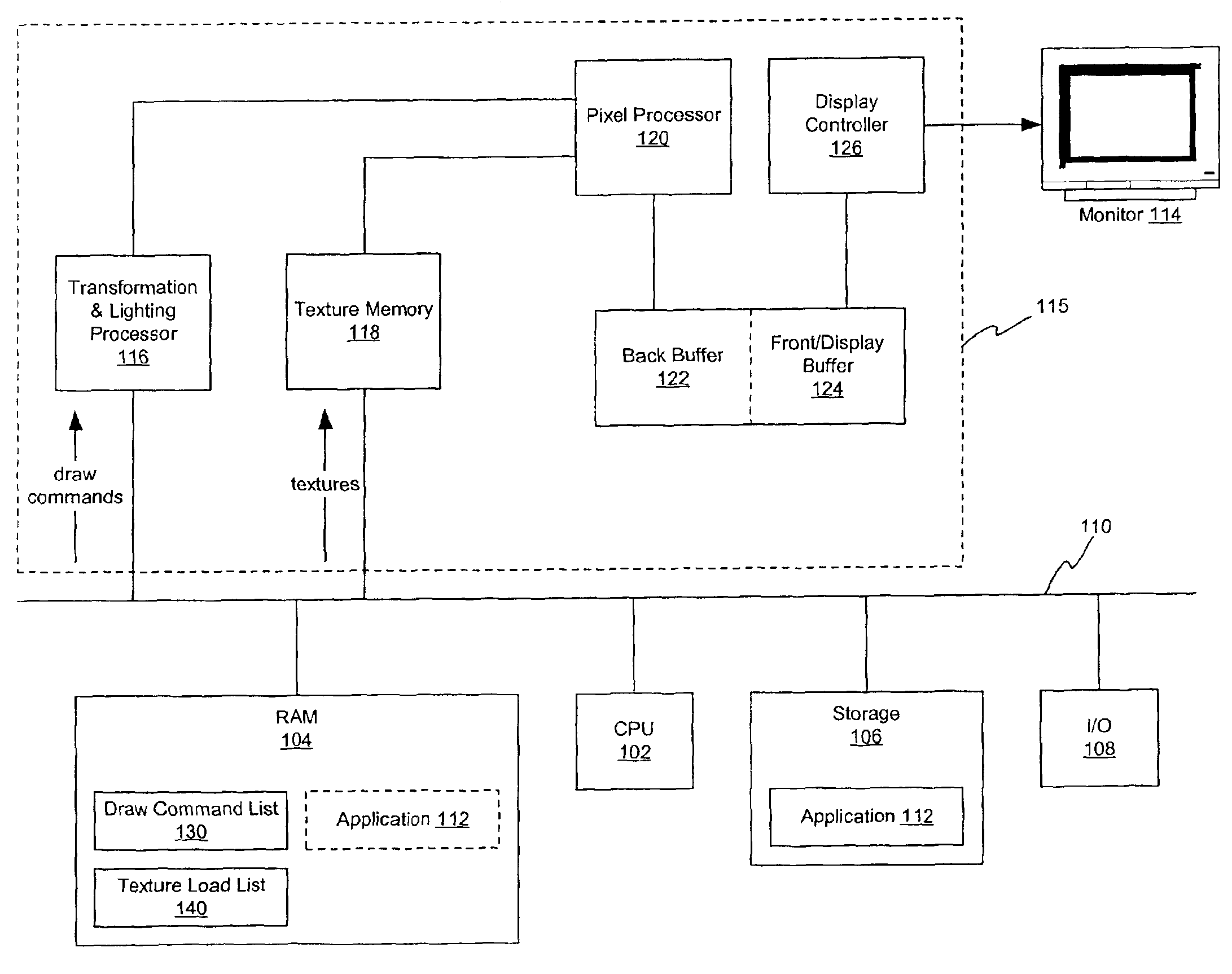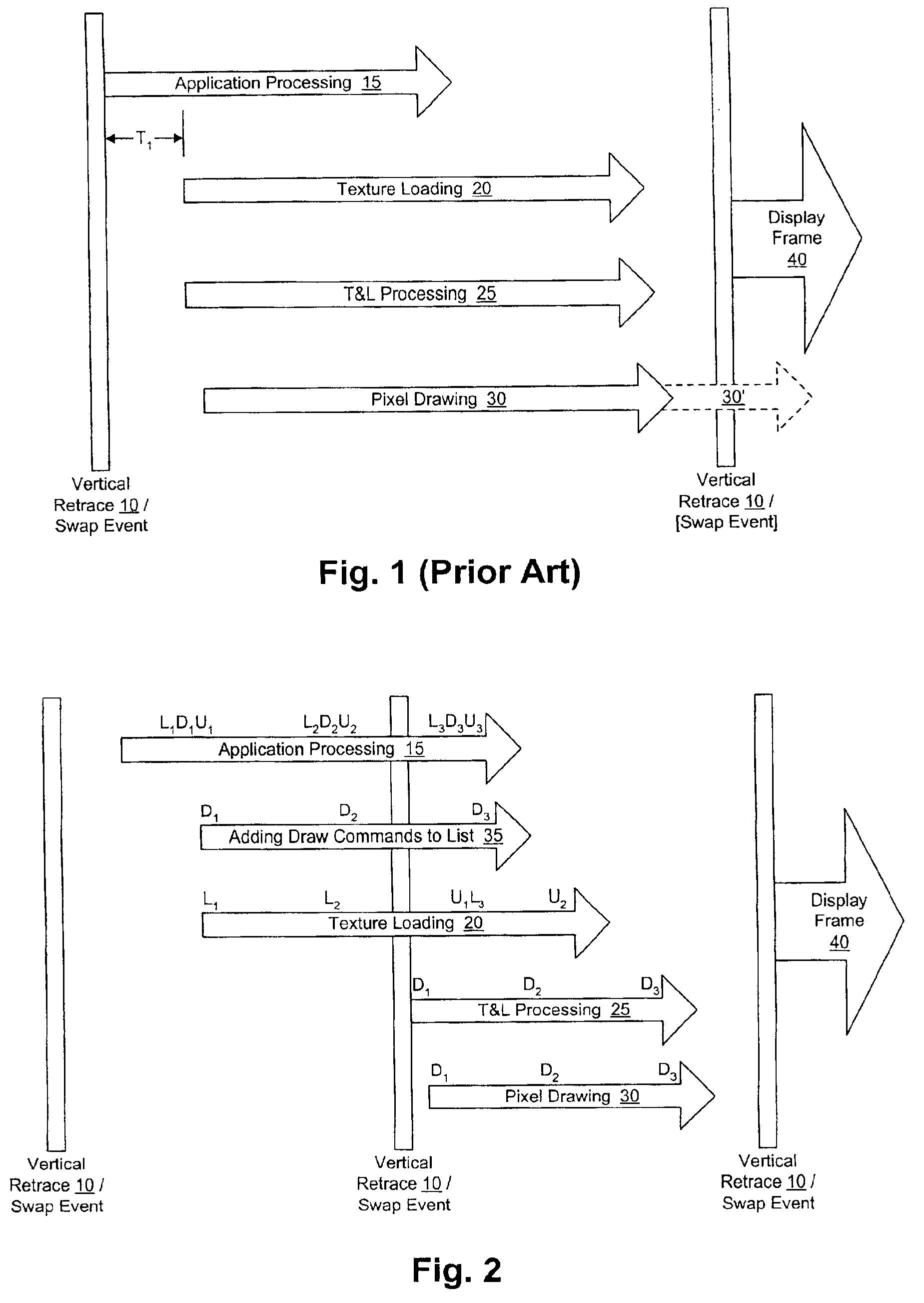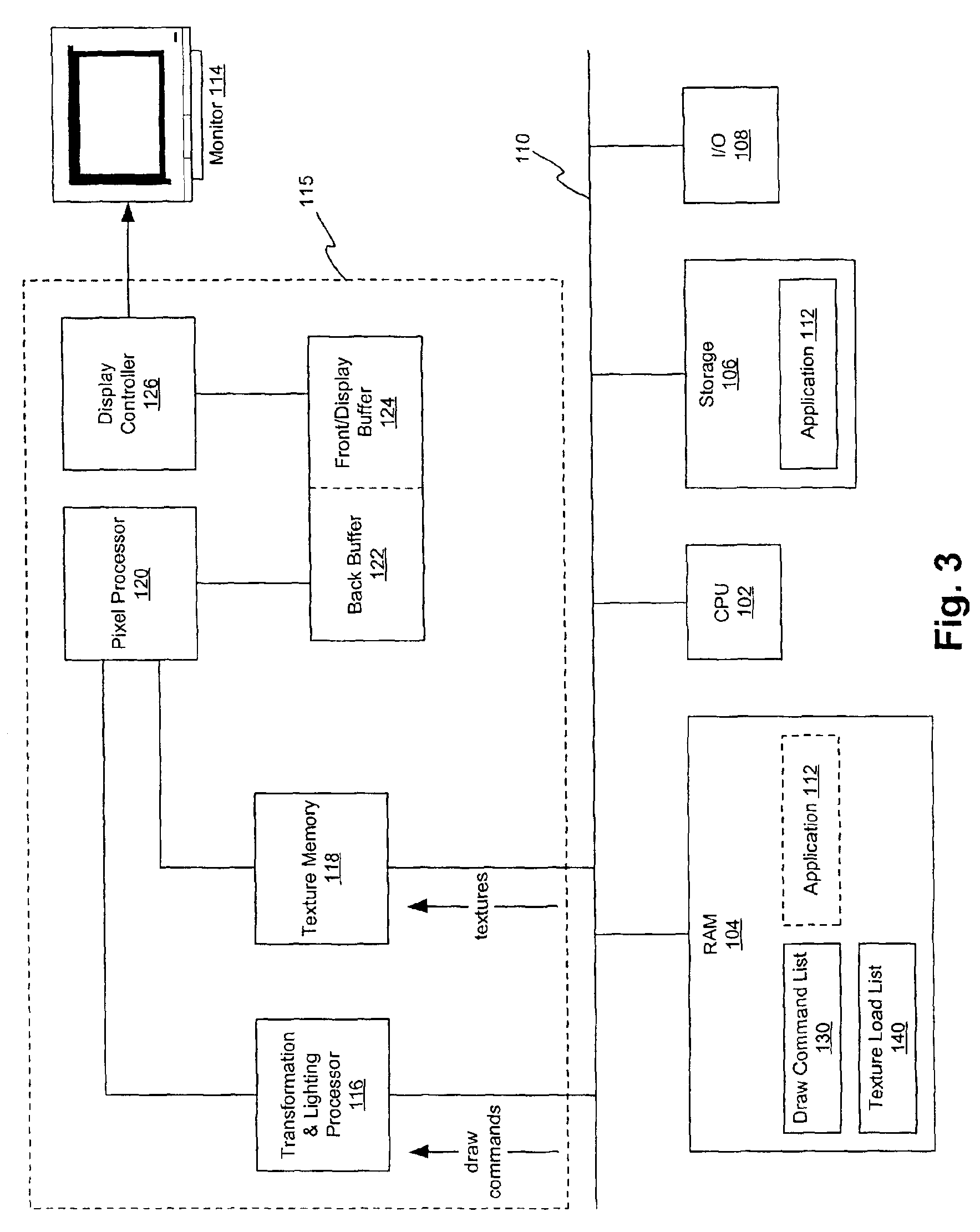Management of limited resources in a graphics system
- Summary
- Abstract
- Description
- Claims
- Application Information
AI Technical Summary
Benefits of technology
Problems solved by technology
Method used
Image
Examples
Embodiment Construction
[0027]FIG. 2 is an event diagram that illustrates the processing that occurs for a particular frame according to a preferred embodiment of a graphics system. An embodiment of the hardware architecture of a double-buffered graphics system for performing the operations shown in FIG. 2 is described in greater detail in connection with FIG. 3.
[0028]Some of the advantages of the invention can be appreciated by comparing the operation of an embodiment of the invention shown in FIG. 2 with that of a typical system shown in FIG. 1. In FIG. 2, the application is allowed to process 15 graphics data for a next frame before the swap event (which in this example is synched with the monitor's vertical retrace 10). Preferably, the application begins to process 15 graphics data for the frame shortly after the application processing for the previous frame ends (not shown), which minimizes or eliminates the amount of time the CPU is idle. When the application processing 15 begins for the frame, the a...
PUM
 Login to View More
Login to View More Abstract
Description
Claims
Application Information
 Login to View More
Login to View More - R&D
- Intellectual Property
- Life Sciences
- Materials
- Tech Scout
- Unparalleled Data Quality
- Higher Quality Content
- 60% Fewer Hallucinations
Browse by: Latest US Patents, China's latest patents, Technical Efficacy Thesaurus, Application Domain, Technology Topic, Popular Technical Reports.
© 2025 PatSnap. All rights reserved.Legal|Privacy policy|Modern Slavery Act Transparency Statement|Sitemap|About US| Contact US: help@patsnap.com



